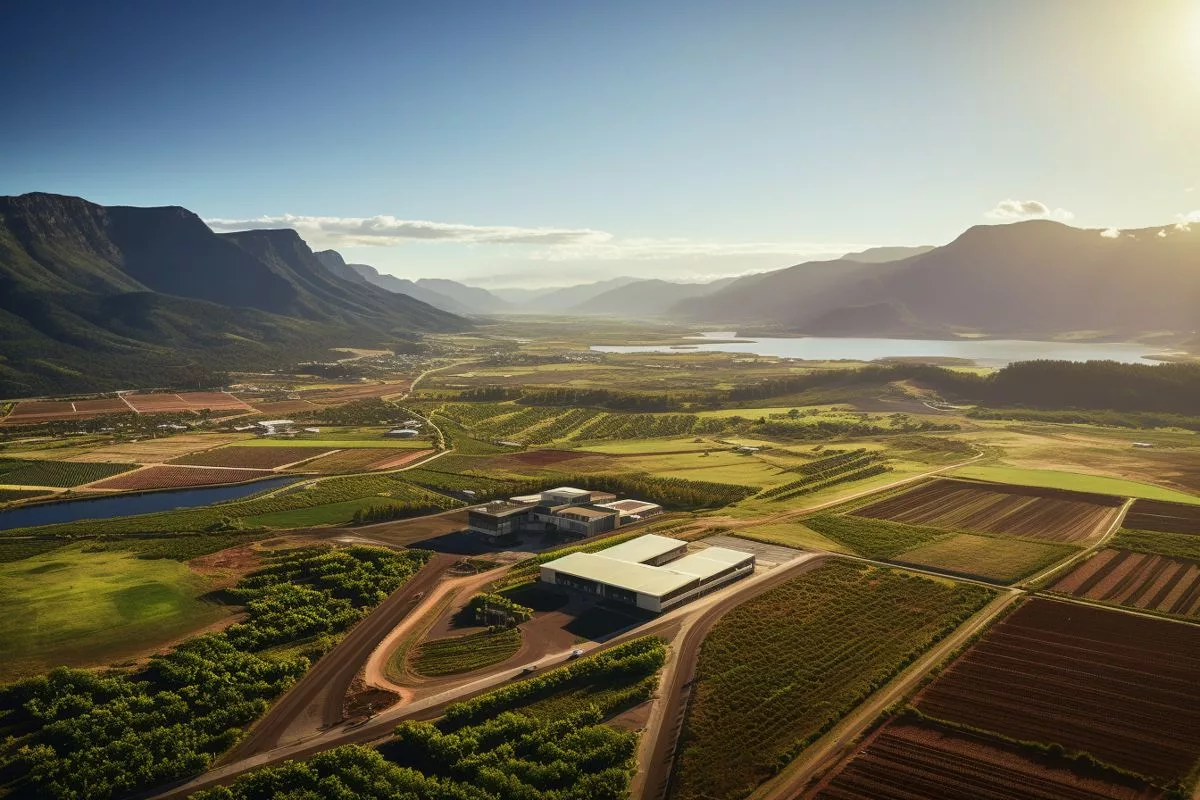The Cape Winelands Airport is getting a major upgrade to become a commercial airport. The plan includes a new runway, terminal building, and cargo facilities. However, the expansion has raised concerns about noise pollution and environmental impact, leading to an ongoing environmental impact assessment. Public input will be crucial in shaping the project’s path and its effects on the local community. The airport’s rich history and ownership transitions also add to the significance of this transformation journey.
What is the Cape Winelands Airport upgrade plan?
The Cape Winelands Airport is undergoing a significant upgrade to make it a commercial airport. The plan includes runway realignment, airside infrastructure, cargo accommodations, terminal edifice, and fuel storage facilities. The airport’s expansion has raised concerns about noise pollution and environmental impact, with an ongoing environmental impact assessment. The public input will play a crucial role in the project’s path and its effects on the neighboring areas.
Historical Background and Ownership Transitions
Nestled in the scenic landscape of Durbanville, the Cape Winelands Airport is preparing for a comprehensive revamp. The historical facility, initially a World War II aerodrome, then a general aviation airfield, is slated for a significant upgrade to propel it into the commercial airspace sector. This monumental project includes a realignment of the runway, extensive airside infrastructure, a boutique terminal edifice, cargo accommodations, and fuel storage facilities. As expected, such a grand endeavor has not come without its fair share of controversy, igniting debates on noise pollution and environmental impact among local communities.
Born in 1943 as the Fisantekraal Airport, this aviation hub has a rich history. The airfield was a base for Lockheed Ventura bombers during World War II and transitioned into a general aviation airfield after the war for recreational flying, flight training, and charter operations. In 1993, Doug Delange took control of the 150-hectare location. However, the ownership changed once again in 2020 when business tycoons Rob Hersov and Nick Ferguson set up Cape Winelands Airport Ltd.
The ambitious upgrade plan envisions the airport as a thriving hub, mirroring the bustling atmosphere of Gauteng’s Lanseria Airport. Positioned strategically for regional connections, the airport is approximately 25 km from Cape Town International Airport and about 10.5 km northeast of Durbanville. The refurbished runways, a primary 3.5 km long one, and a secondary cross runway of 700 m, are optimized to handle long-haul, wide-body flights from international airlines and operators.
Potential Challenges and Environmental Impact
While the upgrade undoubtedly represents a significant leap towards modernization and development, it has also raised several concerns. Foremost among these is the potential noise pollution, which could disrupt the serenity of Durbanville’s residential neighborhoods, sparking heated discussions on local social media platforms. The environmental impact of this large-scale project has also led to an environmental impact assessment (EIA), currently led by independent environmental professionals.
Public Participation and Future Directions
The airport’s expansion plan is presently in the initial stage of public engagement, with public comments open until December 8. The public’s input and concerns will play a crucial role in molding the project’s path and its effects on the neighboring areas. This crucial aspect echoes the importance of maintaining a delicate balance between development ambitions and community interests. A second phase of public participation is scheduled for the new year, continuing the ongoing dialogue between the airport authorities and the public.
The Cape Winelands Airport’s major upgrade undoubtedly carries significant implications for not only Durbanville but the entire Cape region. As the airport prepares for this remarkable transformation, it grapples with the dual challenge of unleashing its commercial potential while also addressing local community concerns. The outcome of the public consultation process and the resulting modifications to the project plan will influence the airport’s future course and its effects on the surrounding areas. This transformation journey is not just about an upgrade; it’s about evolving while honoring its historical past and maintaining harmony with its current environment.
What is the historical background of Cape Winelands Airport?
The Cape Winelands Airport has a rich history, starting as Fisantekraal Airport in 1943, which was a base for Lockheed Ventura bombers during World War II. After the war, it became a general aviation airfield for recreational flying, flight training, and charter operations. The airport changed ownership several times, with the current owners being Rob Hersov and Nick Ferguson, who took over in 2020.
What is the significance of the upgrade plan for Cape Winelands Airport?
The upgrade plan for Cape Winelands Airport is significant as it aims to transform the airport into a commercial airport, with a new runway, terminal building, and cargo facilities. The upgrade plan is expected to make the airport a thriving hub for regional connections, similar to Gauteng’s Lanseria Airport.
What are the potential challenges of the airport’s expansion plan?
The airport’s expansion plan has raised concerns about noise pollution and environmental impact, which could disrupt the serenity of Durbanville’s residential neighborhoods. An environmental impact assessment is currently underway to address these concerns.
How will public participation shape the airport’s expansion plan?
Public participation is crucial in shaping the airport’s expansion plan and its effects on the neighboring areas. The public’s input and concerns will play a significant role in molding the project’s path. The airport authorities will continue the ongoing dialogue with the public, with a second phase of public participation scheduled for the new year.
What is the distance between Cape Winelands Airport and Cape Town International Airport?
Cape Winelands Airport is approximately 25 km from Cape Town International Airport and about 10.5 km northeast of Durbanville.
What is the duration of the public comments period for the airport’s expansion plan?
The public comments period for Cape Winelands Airport’s expansion plan is open until December 8.








